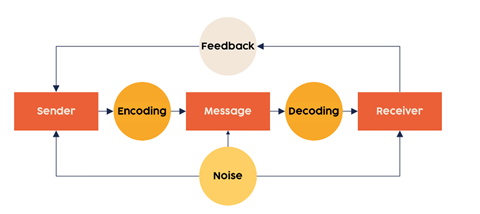Most problems within organisations are rooted in poor communication, but some simple steps will help avoid the pitfalls

“The single biggest problem in communication is the illusion it has taken place,” playwright and political activist George Bernard Shaw once said.

In daily life, we need good communication skills to help us build connection and relationships as we share our feelings, wants and needs. Likewise, in leadership we need great communication skills to help us foster belonging, inspire teams and spark engagement.
We’ve been doing it all our lives – so it should be easy, right?
The truth, unfortunately, is somewhat different. Good communicators are few and far between, and most problems within organisations have their roots in poor communication. Whether that is misunderstood change programmes, toxic working cultures or problematic relationships between divisions, somewhere communication will have gone wrong.
Communication is at the heart of thriving working cultures and is a key driver of engagement within teams. Most organisations have internal and external communications teams and budgets set aside for the management of communications. However, experience tells us that the most impactful communication happening within your organisation is one-to-one.
Communication is at the heart of thriving working cultures and is a key driver of engagement within teams
Two individuals exchanging information and data, interpreting responses, drawing conclusions, trying to connect and sharing experiences – what could go wrong?
Unfortunately, with every communication interaction we have, there are multiple places where opportunities for misunderstanding.

This diagram illustrates the complexity:
- The source of the communication is the sender – when you speak or send an email you are the source.
- The message at the centre is what the sender is trying to convey.
- Encoding is the construction of your message. Good encoding – appropriate language, for example – makes your message clear and therefore reduces the risk of confusion. If you are communicating your message to more than one person, remember that each person might receive it differently.
- Decoding is the process that occurs when the recipient hears or receives your message. Effective decoding happens when you have spoken clearly and demonstrated a level of understanding. Decoding is obstructed by tone, jargon or excessive words.
- Feedback (such as verbal and non-verbal language) helps you interpret how your message has been understood.
- Noise is anything that interferes with the process – either internally (mental disturbance) or externally (a noisy environment).
The message is exposed to multiple distortions, meaning that the sender and receiver may have completely different interpretations of one interaction.
Four simple rules
Fortunately, following some simple rules will immediately reduce the likelihood of your communications going awry.
First, practice active and empathetic listening. This sounds simple but is an areas most people struggle. Listening with empathy is crucial in building relationships, fostering trust and belonging. To be truly listened to is an extraordinary experience. We encourage all our coaching clients to enhance their listening skills by being truly present in the conversation and watching out for barriers to good listening: often our own judgments, beliefs and perspectives.
Second, seek first to understand, then to be understood. When we listen with the intention of fully understanding, there is a significant effect on the sender: they feel valued, you build trust, they increase their self-awareness of what they are trying to convey and, most importantly, you both see the situation more clearly.
Building rapport and belonging needs to be a key focus for companies that use hybrid working
Third, work hard to foster connection. The last two years of remote work have brought connection challenges for many teams. For this reason, building rapport and belonging needs to be a key focus for companies that use hybrid working. Rapport creates connection, mutual respect and trust; without it the risk of misunderstanding is heightened.
Finally, we need to remember that everyone has different communication preferences and only by communicating can we understand what these are. Experience suggests that at one-two-one, team and organisation levels there needs to be a communications charter to reflect this.
What should be in a communications charter?
Good questions to consider when exploring your organisation’s communications approach include:
1. How do we like to brainstorm and to tackle problems?
2. How do we contact each other out of hours?
3. How do we update each other on progress?
4. How do we convey important, but not urgent information?
5. How do we communicate when our teams are on different working patterns?
6. What is our meeting strategy or policy?
7. How we do balance collaboration versus deep work time?
8. How do we communicate between teams or departments?
9. What tools do we have and what tools do we use?
Natalie Hall and Phanella Fine run Up Rising, a human capital consultancy focused on culture and leadership
Every Person Counts

We know the industry has no shortage of suggestions for tackling construction’s skills crisis, from reforming apprenticeships, to offering more flexibility, to increasing diversity, to providing better pathways from education to the workplace. Our Every Person Counts coverage aims to provide a place where debates can play out, views be aired and solutions shared on all these topics.
If you have an employment initiative you want to tell us about email us at newsdesk@building.co.uk with the subject line “Every Person Counts”. You can also contact us via Twitter @BuildingNews and LinkedIn @BuildingMagazine, please use the hashtag #everypersoncounts. We look forward to hearing your employment stories.
You can find all our Every Person Counts coverage in one place on our website.
And if your organisation has a particularly strong record in this area, you could consider entering the Every Person Counts – People Strategy Award at this year’s Building Awards.




























No comments yet